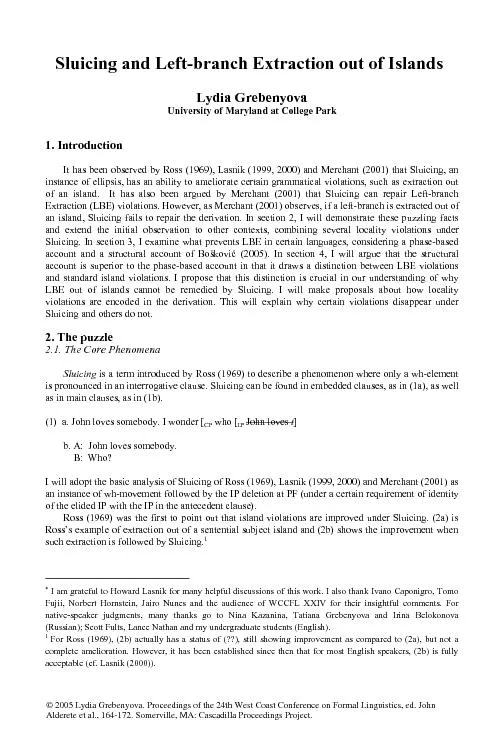PDF-University of Maryland at College Park It has been observed by Ross (1
Author : jane-oiler | Published Date : 2016-08-03
t b A John loves somebody B Who I will adopt the basic analysis of Sluicing of Ross I am grateful to Howard Lasnik for many helpful discussions of this work I also
Presentation Embed Code
Download Presentation
Download Presentation The PPT/PDF document "University of Maryland at College Park I..." is the property of its rightful owner. Permission is granted to download and print the materials on this website for personal, non-commercial use only, and to display it on your personal computer provided you do not modify the materials and that you retain all copyright notices contained in the materials. By downloading content from our website, you accept the terms of this agreement.
University of Maryland at College Park It has been observed by Ross (1: Transcript
Download Rules Of Document
"University of Maryland at College Park It has been observed by Ross (1"The content belongs to its owner. You may download and print it for personal use, without modification, and keep all copyright notices. By downloading, you agree to these terms.
Related Documents














